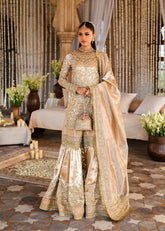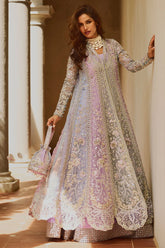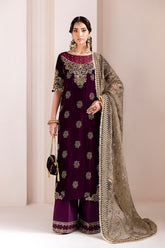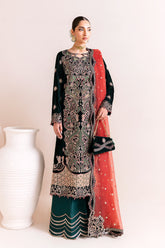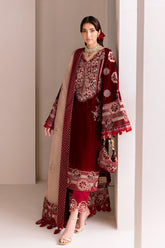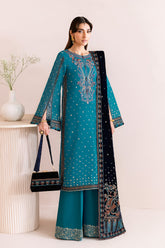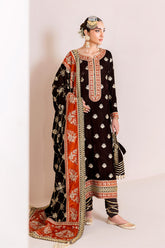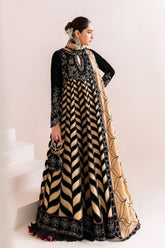A History of Women's Handbags: From Purses to Totes
Handbags have been an essential part of women's fashion for centuries, evolving in both form and function. From the simple purses of the past to the versatile totes of today, the history of women's handbags is a fascinating journey through time, culture, and style.
- Ancient Beginnings:
In ancient civilizations, particularly in Egypt, the origins of handbags can be traced back to small pouches made from linen or leather. These early handbags served a dual purpose, combining practicality with symbolism. They were primarily designed to hold a woman's essential items, such as cosmetics and jewelry, protecting them from the harsh elements of the time. What sets these ancient bags apart is their intricate designs and symbolic significance. Adorned with meticulous embroidery and symbols like the ankh, scarab beetle, and the Eye of Horus, these handbags were not just functional accessories but also conveyed deep cultural and religious meanings. They reflected the wearer's social status, taste, and identity, demonstrating that handbags have long been more than mere utility items, encompassing art and symbolism in their rich history.
- The Medieval Girdle Pouch:
Throughout the Middle Ages, women embraced a distinct and functional accessory known as the girdle pouch. These pouches were ingeniously attached to their belts, serving a dual purpose. Functionally, they provided a means of carrying essential items such as coins, keys, herbs, or small tools, making them indispensable in an era when personal belongings required safekeeping. Beyond their practicality, girdle pouches also held a symbolic significance. They became status symbols, conveying the wearer's wealth and social standing. The materials, craftsmanship, and adornments of these pouches not only demonstrated the wearer's ability to afford such items but also reflected the aesthetic sensibilities of the medieval period. Thus, girdle pouches played a multifaceted role, combining utility with statements of prestige and style in the rich tapestry of medieval fashion and culture.

- The Reticule Era:
During the late 18th and 19th centuries, a charming accessory known as the reticule, or "indispensable" as it was sometimes called, took center stage in women's fashion. These small, exquisite bags represented both practicality and elegance. Reticules were cherished for their ability to carry essential items such as handkerchiefs, cosmetics, and even smelling salts, which were indispensable for etiquette-conscious women of the time. What set reticules apart was their opulence. Crafted from luxurious materials like silk, velvet, and satin, they were often embellished with delicate embroidery, intricate beadwork, and fine lace, showcasing the craftsmanship and artistry of the era. Reticules were not merely accessories; they were statements of refinement and taste, adding a touch of sophistication to the attire of fashionable women during this period.
- The Rise of the Chatelaine:
In the Victorian era, a time marked by intricate fashion and the demands of daily life, the chatelaine emerged as a fashionable and highly practical accessory. This unique item featured a series of chains or hooks suspended from a decorative brooch or pin, worn at the waist. The purpose of the chatelaine was twofold: it provided a convenient way for women to carry essential tools and accessories, and it served as an elegant adornment.
The chatelaine's versatility was its defining feature. Attached to the chains or hooks were an array of small containers and tools, including tiny bags or pouches, scissors, thimbles, perfume vials, sewing implements, and even keys. These items were essential for the various roles Victorian women played in their households and society, from maintaining their intricate fashion to managing their homes.
Despite its utilitarian function, the chatelaine was far from mundane. It was designed with intricate detailing and often featured precious metals and gemstones. These ornate chatelaines reflected the complex demands of Victorian women's daily lives, blending style with practicality. As an accessory that combined fashion and functionality, the chatelaine remains a symbol of the resourcefulness and elegance of the Victorian era.
- The Flapper Era and Art Deco Bags:
The 1920s, often referred to as the "Roaring Twenties," marked a significant shift in women's fashion, and handbags were no exception. This transformative period gave rise to the iconic flapper style, which liberated women from the constraints of previous decades. As hemlines rose and social norms relaxed, handbags underwent a radical transformation to align with the carefree and independent spirit of the era.
One of the most noticeable changes was the size of handbags. They became considerably smaller and more compact than the elaborate reticules and chatelaines of earlier decades. These diminutive bags were designed to complement the streamlined silhouettes of flapper dresses and to allow women greater mobility on dance floors and in social settings.
Art Deco, an influential design movement of the time, left an indelible mark on handbag design during this era. Art Deco-inspired handbags featured geometric shapes, bold lines, and intricate patterns. Luxurious materials such as beaded silk, sequins, and metallic fabrics were used to create dazzling evening bags that added a touch of glamour to the fashionable flapper ensemble.
The 1920s not only revolutionized women's fashion but also redefined the concept of handbags as statement pieces. These Art Deco-inspired bags became more than just functional accessories; they were expressions of the era's modernity, vibrancy, and freedom. Today, they remain iconic symbols of the Roaring Twenties and a testament to the enduring influence of Art Deco on fashion and design.

- The Golden Age of Handbags:
The mid-20th century saw the emergence of iconic handbag designers and brands, such as Chanel, Gucci, and Louis Vuitton. These designers introduced timeless classics like the Chanel 2.55, the Gucci Bamboo Bag, and the Louis Vuitton Speedy, which remain popular to this day.
- The Evolution of Totes:
In the 1960s, the tote bag gained popularity for its practicality and versatility. These large, unstructured bags were initially made from canvas and were associated with the casual, bohemian style of the era. Over time, totes evolved to include a wide range of materials and designs, making them a staple of modern fashion.
- Contemporary Handbag Trends:
Today, women's handbags come in various styles, from clutches and shoulder bags to crossbody bags and backpacks. High-end designers continue to create coveted pieces, while sustainable and ethical brands are gaining traction, reflecting changing consumer values.
In conclusion, the history of women's handbags is a testament to the ever-changing landscape of fashion, culture, and women's roles in society. From functional pouches to exquisite designer pieces, handbags have not only carried women's belongings but also conveyed their status, style, and individuality throughout history.

